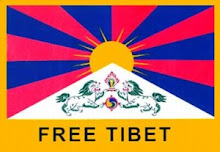 Hello everybody, Babe(b)logue goes on holiday, so this will be the last post for a while. See you soon, and stick around!
Hello everybody, Babe(b)logue goes on holiday, so this will be the last post for a while. See you soon, and stick around! Radu.
P.S. As far as I know, this somewhat mysterious CD collects two beautiful Pela Simba’s albums originally published during the first half of the 80’s, Pela Simba and Sambara. If you discover more info, please leave a comment here. Cheers!
«Pela Simba, chanteur-guitariste d'origine congolaise, fondateur du groupe Thu Zahina, neveu de Tabu Ley (l'un des pères de la musique africaine moderne), vous propose une musique ethno-urbaine où s'enroulent tout en couleur poésie, rythmes, chants et joie de vivre.
Thu Zahina” est le nom d’un groupe musical qui fait parler de lui au Zaïre dans les années soixante dix. C’est le premier groupe composé uniquement de lycéens. Parmi les cofondateurs de “Thu Zahina” il y a Pela Simba.
Très vite populaire chez les jeunes, ce groupe, avec son style nouveau, fait naître dans son sillage d’autres groupes de lycéens tels que “Zatko”, “Bella Bella”, “Stukas” et bien d’autres.
Dès le départ, “Thu Zahina” se trouve un parrain de choix en la personne de l’artiste Tabu Ley (Rochereau). En effet ce dernier: chanteur et auteur-compositeur, est l’une des plus grandes stars du Zaïre et d’Afrique. Quelques temps plus tard ce groupe de lycéens est produit par Luambo-Makiadi dit “Franco”, une autre grande star du pays et du continent africain. L’arrivée de “Thu Zahina” et de tous ces autres groupes est sans conteste le départ d’une nouvelle musique zaïroise. C’est le début des artistes comme Papa Wemba, Pépé Manuku, Evoloko. Nyoka Longo,...
Après son départ du groupe “Thu Zahina”, Pela crée les “Saphirs” et ensuite rejoint Pépé Kallé, Vata Mombassa dans le groupe “Myosotis”.
En 1977, Pela arrive à Paris pour des études d’audiovisuel et de journalisme qu’il terminera quelques années plus tard avec succès. Mais ses études ne l’empêchent pas de continuer de vivre sa passion: la musique. C’est ainsi qu’il consacre ses heures de liberté à la création de l’une des premières formations musicales, d’étudiants d’Afrique Centrale.
Avec Jean-Faustin Missamou et Aimé Kobo ils fondent les “Mongali”.
Quelques années plus tard, avec Maika et Bony Bikaye, Pela joue aux côtés de Ray Lema dans le groupe “Carma” sponsorisé par Jean-François Bizot et son journal “Actuel”.
Puis toujours avec Maika, c’est la naissance du groupe “Malaika” avec des musiciens comme Denis Hekimian, Manou Lima ou le saxophone Jimi Mvondo.
En tant qu’auteur, compositeur, arrangeur ou interprète, Pela participe à un grand nombre de disques avec des artistes de renom tels que Tabu Ley, Mbilia Bel, Franco, Tchounou Bowen...
En 1986, on lui confie la direction artistique du “Kiss Club”. Il en fait très vite un haut lieu de la musique black et métisse à Paris. On s’y presse tous les soirs pour y rencontrer des artistes connus ou inconnus; et danser et chanter sur des rythmes de toutes les couleurs.
Pendant deux ans Pela et son groupe le “Mouvement AYE” s’y produisent tous les soirs. Et les invités pour “taper le boeuf” seront pas les moindres: Higelin, Eric Serrat, Alpha Blondy, Rido Bayonne, etc.
Pela s’est produit dans de nombreux lieux réputés de la nuit parisienne tels que “Le Bataclan”, “La Chapelle des Lombards”, “Le Rex Club”, “L’espace Cardin”, etc. et dans un grand nombre de villes hors de Paris.» (EspaceConcert)
Link in comments













